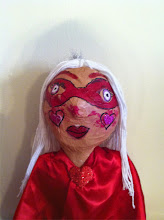The Armory Show can be summed up in 3 words crowded, overwhelming, and Eurocentric. The weekend of live fast, make art fast, get it into a gallery fast, sell it fast, and look at it fast; seemed to be the main theme of the Amory Show. Some galleries (predominately the higher-end well established ones) stayed within a theme of a specific artist and what their star artist has created within the last year or two. I feel the others simply picked what would sell and sat back to watch the Eurocentric art world have at it.
In Vulture magazine, the Godfather of the Art world, Mr. Chuck Close, was quoted as saying, “Honestly, I thought it was a lot less interesting than usual. I don't know why exactly, and I don't know what I would add to it, but it didn't seem to have much. It was very dull and ordinary.” As a youngster to the whole Art scene world, I have seldom had an occasion where I have been more overwhelmed than at The Armory Show. The parody of the event and the sardine feeling could not be unnoticed.
Which brings me to my next point, how can you build a personal relationship with an artwork when thousands of people are knocking into to you to see the next great artist in the next great cubicle in the next great row? The whole experience reminded me of rows of show horses in their stables being bought and sold to the highest or most powerful bidder (or collector). Has any one ever told the organizers of the Armory Show that less is more?
The 2010 Armory Show-Modern was not the most contemporary but in this space, the environment seemed to focus on giving art space, with the sale being secondary. I enjoyed looking at the past more than the present and future because you could actually see the artwork, look at the dimensions, the materials, scope, and theme.
If the prerequisite to show at the Armory Show was to house the best of the best galleries, collectors, artists, critics, and institutions, it may be too much of a good thing is my opinion. In my research there was over 170 contemporary dealers and almost 70 Modern dealers. The majority of exhibitors were from Europe and New York City, with only a few from outside the Big Apple and westernized countries.
The best thing I got out of The 2010 Armory Show was the experience. It is completely international in scale (In the Eurocentric, White, middle to upper class sort of way) and made me realize that art is bigger than two piers in Chelsey; it’s bigger than every gallery’s booth there. If I am feeling overwhelmed in a public space with art I adore (but can’t see) than there is a future for art even in a recession. The art world is not shriveling up and dying and its not giving excuses for over priced art in our society. As long as art is over the top (even if I don’t like getting run over by crowds of people) then I am happy that so many people support it even if they can’t afford it.
In the New York Times, art critic Ken Johnson reviews the Armory Show in “Ahoy from Nudes, a Pirate and Scrooge McDuck.” He speaks of one work that I did get to see, Bert Rodriguez “The True Artist Makes Useless Shit for Rich People to Buy.” Considering that this work is a reinterpretation of a modernist work by Bruce Nauman, it seems to be brutally honest about what an artist role is in today’s society but also using another artist’s idea and altering it slightly, postmodernism maybe?
At the Armory Show-Modern pier, brothers, Steve and Billy Blaise Dufala and their 2010 watercolor on paper “Fog” introduced me to a work. These brothers are represented by the Fleisher Ollman Gallery in Philadelphia, PA; outside of the majority of art galleries. I don’t quite understand why it was in this area but this Watercolor on Paper mirrors wallpaper in its flat, airy quality. On closer examination, the Dufala brothers repeated plastic bottles floating and interacting with one another. This artwork reminds the viewer of current environment issues, particularly The Great Pacific Garbage Patch.
In conclusion, I think there were a number of important and interesting artworks at the 2010 Armory Show and a number of them I personally enjoyed. I wish they extended the time period of the show so each person could create a better relationship with the art and the space itself. If art continues to draw such crowds and sell for exorbitant amounts of money, then there is hope for the art market.




No comments:
Post a Comment